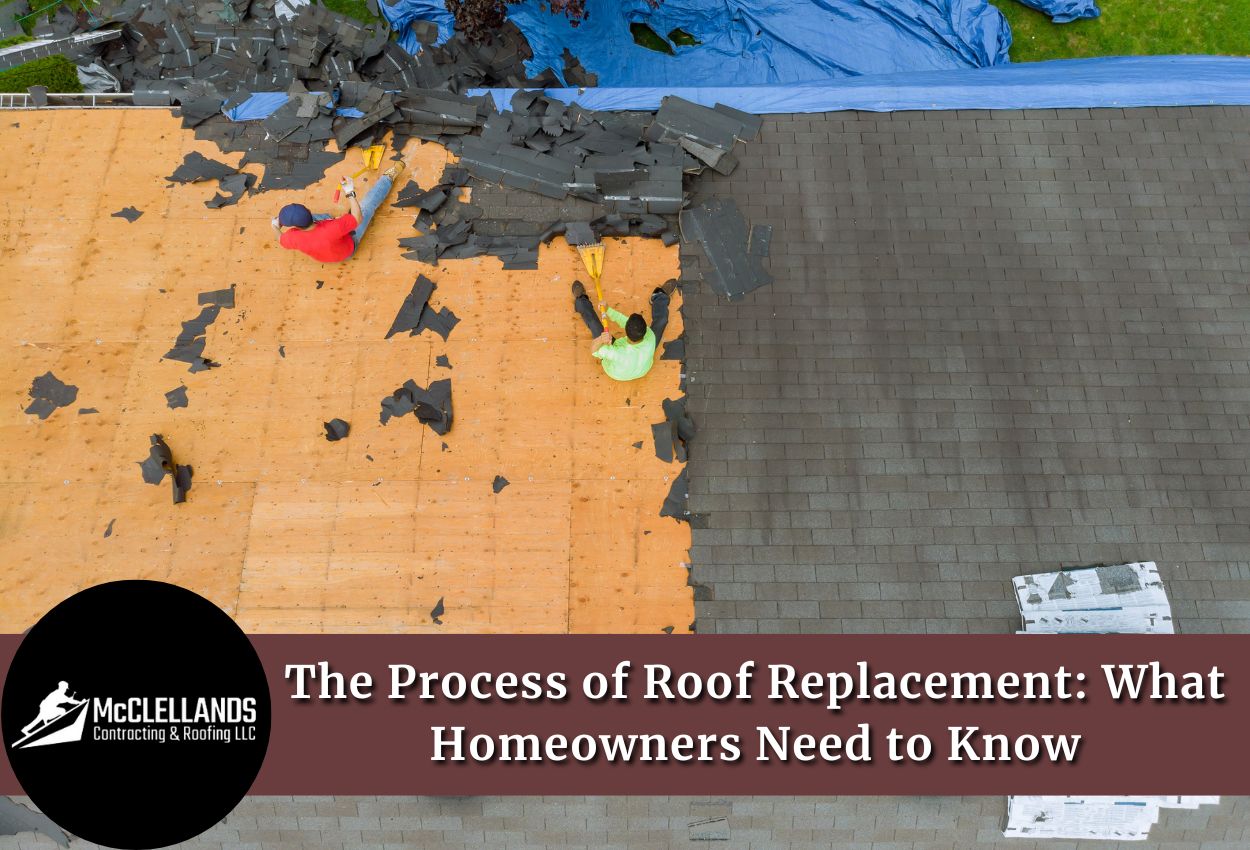A school's roof is an important investment that protects students, staff, and valuable resources. In climates like Pennsylvania, where buildings often face storms and ice dams, maintaining a sturdy school roof is important for creating a safe and comfortable learning environment.
As a school administrator or facilities manager in Pennsylvania, you're likely aware of the challenges that the climate imposes on roofs. From humid summers to snowy winters and everything in between, your school's roof is constantly bombarded with weather-related stress.
In this guide, we'll explore the major signs that indicate it might be time for a school roof replacement. By recognizing these signs early, you can take proactive steps to address issues before they turn into major problems, potentially saving your school significant time and money in the long run.
Understanding the Lifespan of School Roofs
Before starting with the signs that indicate you’re in need of a school roof replacement, we will quickly try to understand their lifespan.
In Pennsylvania, most school buildings have flat roofs, generally made of materials like EPDM, TPO, or built-up roofing (BUR) material.
Generally, school roofs last between 20 to 30 years, depending on various factors such as material quality, installation quality, amount of regular maintenance, and exposure to outdoor elements.
If your roof is older than 30 years, call us today at (412) 353-5660. Our team will thoroughly inspect your school roof and will assist you in making the right decision.
What Major Signs Indicate You Need A School Roof Replacement in Pennsylvania?
Here are some signs that indicate it might be the right time to replace your school’s roof.
1. Water Damage and Leaks

One of the most obvious signs that your school roof needs attention is the presence of water damage or leaks. You might notice water stains on ceilings or walls, especially after heavy rain or snow melt. These stains often appear as discolored patches or rings and can grow over time if left unchecked.
It's important to note that not all leaks are immediately visible. Sometimes, water can seep into hidden areas of the building, causing damage to insulation, electrical systems, or structural components before you even realize there's a problem. If you start to notice a musty smell in certain areas of the school, it could be a sign of hidden water damage.
2. Algae and Mold Growth

In Pennsylvania's climate, algae and mold growth on your school roof can be a serious concern.
If you notice dark streaks or patches on the roof’s surface, this could indicate the presence of algae. Inside the building, mold growth might show itself as dark spots on ceilings or walls, often accompanied by a musty odor.
Mold and algae growth can pose health risks to students and staff, potentially causing respiratory issues and allergic reactions.
3. Damaged or Missing Roofing Material
For flat roofs common in Pennsylvania schools, damage to the roofing membrane is a clear sign that replacement might be necessary.
Look for signs such as bubbles or blisters on the roofing material, which indicate trapped moisture or air.
Cracks, tears, or separations along the membrane are also red flags that shouldn't be ignored.
If the roof of your school has peaked portions with shingles, keep an eye out for curled, cracked, or missing shingles. You might also notice granules from shingles accumulating in gutters or downspouts. This is a sign that the shingles are deteriorating and losing their protective qualities.
4. Ponding Water

Flat roofs are particularly vulnerable to water ponding, which occurs when water collects in low spots and doesn't drain properly.
If you notice areas of standing water on your school's roof for more than 48 hours after rainfall, it's a sign of poor drainage that needs to be addressed.
Ponding water can result in premature aging of the roofing material, increased risk of leaks, and, in severe cases, structural damage due to the added weight.
It can also create an environment that enables algae and mold growth, making the problems so much worse.
5. Increased Energy Costs
While not as visible as other signs, a sudden increase in your school's energy bills can be an indicator of roofing problems.
As a roof ages or becomes damaged, it loses its insulating properties, making your HVAC systems work harder to maintain balance and comfortable temperatures within the interior of the building.
If you notice rising energy costs that can't be explained by rate increases or changes in usage patterns, it might be worth having your roof inspected for major issues.
You might also like: How Much Does Flat Roof Replacement Cost In Pennsylvania?
How Often Do School Roofs Need A Professional Inspection?
We recommend scheduling professional roof inspections at least twice a year. These seasonal checks allow you to catch potential issues before they escalate into major problems.
It's also wise to have your roof inspected after harsh weather events, such as heavy storms or unusually heavy snowfall. These extreme conditions can cause damage that might not be immediately apparent but could lead to major problems if left unaddressed.
While it's possible to conduct some visual inspections yourself or have your maintenance staff do so, hiring a professional is a wise choice. They have the knowledge and tools to spot subtle signs of damage that untrained eyes might miss.
Also Read: How Often Should You Replace A Roof?
How Long Does a School Roof Replacement Take, and What are the General Steps To Take?
The duration of a school roof replacement depends on the size and complexity of the roof. Generally, replacing the roof of small to medium-sized schools can take up to 1 to 3 weeks, while replacing a large-sized school roof can take anywhere from 1 to 2 months.
If you've identified signs that your school’s roof needs replacement, the next step is to plan for this significant project. Here are some key considerations:
👉 Choose Materials That Are Suitable For The Building
When choosing a new roofing system, you need to consider things like durability, energy efficiency, and cost. Options like TPO or EPDM might be suitable for flat roofs, offering good durability and weather resistance. If your school building has sections of pitched roofing mixed with flat roofing, then you might want to choose materials like tile, clay, or architectural shingles for those sections.
👉 Hire A Reputable Roofing Contractor
Look for roofing contractors with experience in school roof replacements. Ensure they're licensed, insured, and have a good reputation in Pennsylvania. Don't hesitate to ask for references from other schools they've worked with.
👉 Budgeting for Replacement
A school roof replacement can be a significant expense. Start budgeting early and explore funding options like capital improvement funds, grants, or local government support. Remember, investing in quality roofing materials now can save you money on repairs and energy costs in the long run.
👉 Timing the Project
Try to schedule the replacement during school breaks to minimize disruption to students and staff. Summer is often an ideal time for roofing work in Pennsylvania but be prepared for potential weather-related delays.
We Are Here To Serve You With Professional Roof Replacement Services In Pittsburgh, PA
If you are looking for high-quality roof replacement services in Pittsburgh and the surrounding areas of Pennsylvania, we are here to assist you. Our team at McClellands Contracting and Roofing understands that a school needs a roof that will stand the test of time and provide a protective atmosphere for students.
When you choose us, you are choosing high-quality, faultless roofing services from the hands of experienced professionals. Our team has accurate knowledge of working with various roofing materials and architectural styles.
From commercial to residential, we can help you with any type of building. Get custom advice about your roof’s health from our professionals. Call us today at (412) 353-5660 and learn more about how we can help you!




